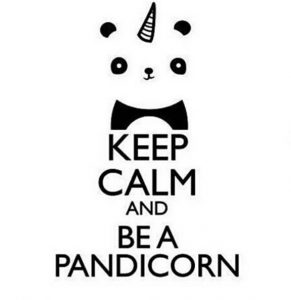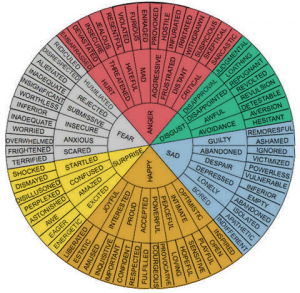MACC Suncrest Division 5 Report Card Overview
Term Two 2022-23, December – February
In anticipation of receiving our Term Two Reports in March, here is an overview of what we studied during the last 3 months! Please see each student’s e-portfolio for more specific information on their projects and learning.
Next, we focused on
the concepts of
PERSPECTIVE and PROBLEM-SOLVING
in our unit
“Solving the Conundrum”
Unit Focus Statement:
Problem solving involves careful observation, critical thinking,
and consideration of multiple perspectives.
What are the skills you need to solve a problem?
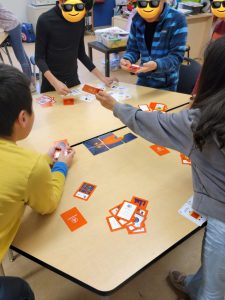
We began our unit with cooperative games and challenges to explore the variety of curricular and core competencies required to solve a problem. Our main focus was critical thinking, but we also used communication, creative-thinking, and personal-awareness skills.
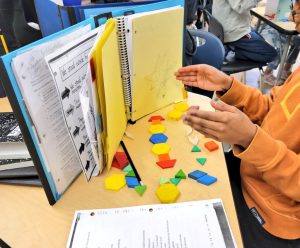 One of our favourites was playing the game Space Team, which is unique because everyone has to work as a team, rather than against one another, to fix the space ship before you have a fatal shut down! Everyone did a great job playing together, using communication and critical-thinking skills!
One of our favourites was playing the game Space Team, which is unique because everyone has to work as a team, rather than against one another, to fix the space ship before you have a fatal shut down! Everyone did a great job playing together, using communication and critical-thinking skills!
We also used the book Zoom and had to put a 30-page wordless book back in the correct order, as a whole class, without being able to talk or touch one another!
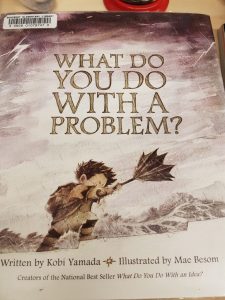
After finishing challenges, we reflected as a group on the skills needed to be successful in a problem or conflict, such as active listening with partners, careful consideration of instructions and perspectives, self-regulation, and the ability to stay calm when you don’t know the answer right away or something unexpected happens.
Finding PERSPECTIVE – Social-Emotional Learning, Career Education, PE and Health, Social Studies
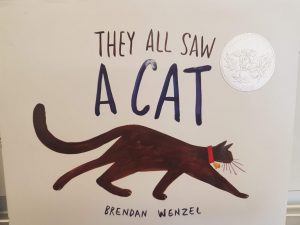
Why do people act the way they do? We incorporated social-emotional learning frequently into our discussions, talking about how to apply problem-solving methods to situations at school, how to care for our community, how to see another person’s perspective, and the emotions and needs such as belonging, power, and fun that drive behaviour. In this way we can better understand why people do the things they do, which can make it easier to respond to a stressful situation. We read the book They All Saw A Cat to discuss how each of our perspectives depends on who we are and how we see the world — our world view.
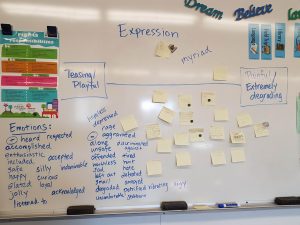 Big problem or small problem? We explored the difference between small problems and big problems in our everyday lives. We discussed how to identify a problem and strategies for solving minor conflicts amongst peers.
Big problem or small problem? We explored the difference between small problems and big problems in our everyday lives. We discussed how to identify a problem and strategies for solving minor conflicts amongst peers.
I appreciated how students contributed to our lesson on “Words that Hurt” as we categorized language we had heard on the playground or in our community as either playful talk between friends or very hurtful words. We made a commitment to become more aware of how words can hurt, even if the person who said them didn’t mean to hurt anyone. This was part of learning perspective.
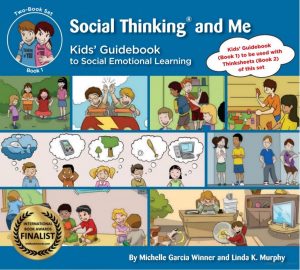 We used the book Social Thinking and Me, a Kids’ Guidebook to Social Emotional Learning to discuss why we need social and flexible thinking, connecting these skills to the solving of both big and small problems. If you can use social and flexible thinking, you can find the hidden rules of how to behave in a group, which helps a lot with being included and solving the small conflicts that come up during the day.
We used the book Social Thinking and Me, a Kids’ Guidebook to Social Emotional Learning to discuss why we need social and flexible thinking, connecting these skills to the solving of both big and small problems. If you can use social and flexible thinking, you can find the hidden rules of how to behave in a group, which helps a lot with being included and solving the small conflicts that come up during the day.
Identity and Understanding Others – Core Competencies, Career Education, Social Studies, Language Arts
What is culture? How does it shape our perspective? In connection with the core competency of Positive Personal and Cultural Identity, we discussed how understanding our own culture and that of others can help us gain perspective. We interviewed one another to see how we do things at home and how our daily lives are different because of culture and family history.
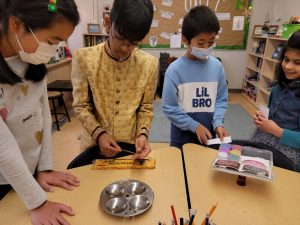
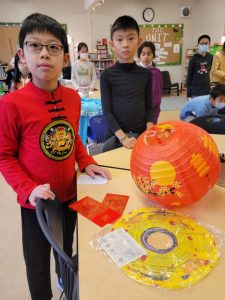
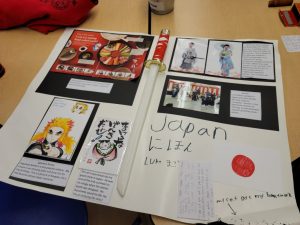
In December, we had a Culture Party, and each student brought in an artifact or display to share with other students, so we could celebrate our own identities and learn about important cultural traditions of others in our class community.
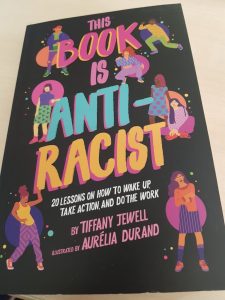 We discussed how differences are sometimes celebrated, but sometimes also cause fear, which can lead to conflict and negative outcomes. We read passages from This Book is Antiracist, which helped us understand societal, long-held beliefs that lead to racism, prejudice, stereotypes, and discrimination based on colour, gender identity, and ethnicity.
We discussed how differences are sometimes celebrated, but sometimes also cause fear, which can lead to conflict and negative outcomes. We read passages from This Book is Antiracist, which helped us understand societal, long-held beliefs that lead to racism, prejudice, stereotypes, and discrimination based on colour, gender identity, and ethnicity.
This led to a larger exploration of the history of discrimination in Canada. We discussed human rights, the UN Declaration of Human Rights, the UN Convention of the Rights of a Child, and the UN Document on Indigenous rights about human rights and ethics. Then we looked closely at how human rights had been denied through Residential Schools, Japanese Internment in World War II, the Komagata Maru Incident, and the Chinese Head Tax.
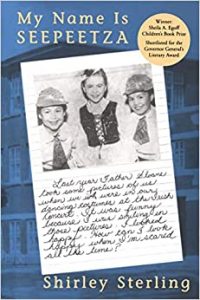 In our discussions about First Nations and Residential Schools, we discussed how language is related to culture, and how a person’s language is an important part of identity. This is why when residential school children were punished for speaking their own language it was such a serious infringement of their human rights. As a class, we also read and analyzed My Name is Seepeetza, so we could better understand the conditions of residential schools from the perspective of someone our own age.
In our discussions about First Nations and Residential Schools, we discussed how language is related to culture, and how a person’s language is an important part of identity. This is why when residential school children were punished for speaking their own language it was such a serious infringement of their human rights. As a class, we also read and analyzed My Name is Seepeetza, so we could better understand the conditions of residential schools from the perspective of someone our own age.
In groups, we wrote and performed teaching skits or presentations to help everyone learn about the history of discrimination in Canada, as well as some of the ways in which the government or others have tried to make amends, apologize, or participate in reconciliation.
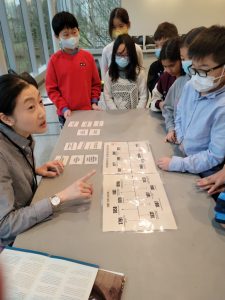
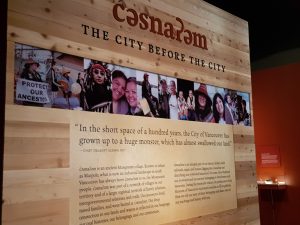
To help us understand reconciliation, we looked at the “City Beyond the City” exhibit through a virtual field trip to the Museum of Vancouver.
The exhibit explains the history of the Musqueam and their village on what is now the Fraser River in South Vancouver. We learned their history and facts about how this exhibit was co-created between the Museum of Vancouver and the Musqueam peoples.
How do scientists solve mysteries? With problem-solving skills and scientific knowledge! — Science and Math
We talked about how crimes are solved using critical thinking, math, and science skills and knowledge. Forensic scientists do lots of careful observation and documentation to carefully document a crime scene and solve crimes. We did lab experiments and activities to practice being forensics investigators just like on CSI.
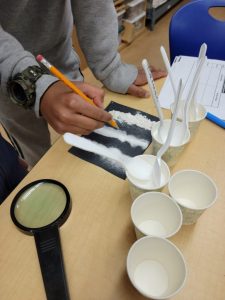 We learned about fingerprints, measuring bones to determine someone’s height, forging of signatures, and watching for physical and chemical properties to identify substances left at the scene.
We learned about fingerprints, measuring bones to determine someone’s height, forging of signatures, and watching for physical and chemical properties to identify substances left at the scene.
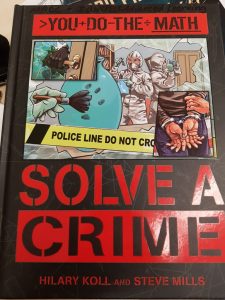 We practiced our CSI Math skills in You Do the Math Solve a Crime, using math knowledge about coordinates, graphing, area, adding and subtracting decimals, fractions, and word problems to do some of the same math a CSI agent or forensic scientist would do!
We practiced our CSI Math skills in You Do the Math Solve a Crime, using math knowledge about coordinates, graphing, area, adding and subtracting decimals, fractions, and word problems to do some of the same math a CSI agent or forensic scientist would do!
Proportionate Reasoning and Problem Solving – Math
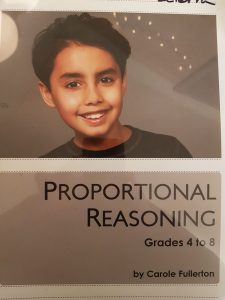 Through Carole Fullerton’s Proportional Reasoning and other math exercises, we did some serious work trying to understand fractions and ratios. Using manipulatives such as coloured chips and tangrams, we explored set, area, and linear models of fractions.
Through Carole Fullerton’s Proportional Reasoning and other math exercises, we did some serious work trying to understand fractions and ratios. Using manipulatives such as coloured chips and tangrams, we explored set, area, and linear models of fractions.
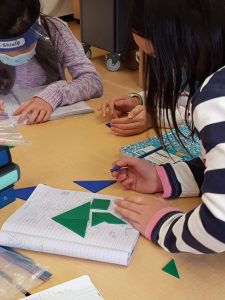
We also discussed the strategies you need to solve complicated word problems, such as reading carefully, making visual diagrams, and identifying important information and steps.
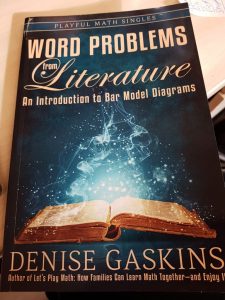
Using the book Word Problems in Literature by Denise Gaskins, we applied Singapore visual, bar diagram strategies to solve word problems from The Hobbit and The Chronicles of Narnia!
Writing a Mystery & Philosophy Through Picture Books – Language Arts and Socials
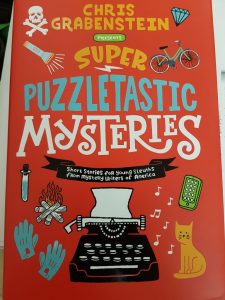 We put our CSI knowledge to work and wrote fantastic mystery stories! First, we analyzed mystery stories we already knew and watched Scooby Doo to identify typical mystery elements such as the suspects, victim, clues, red herring, and alibi. We read Chris Grabenstein’s book Super Puzzletastic Mysteries, and identified the mystery elements used by the writer to spin an interesting tale. We learned how to use punctuation in dialogue, because no story is complete without interesting characters and conversations. Now we need to share our stories with one another!
We put our CSI knowledge to work and wrote fantastic mystery stories! First, we analyzed mystery stories we already knew and watched Scooby Doo to identify typical mystery elements such as the suspects, victim, clues, red herring, and alibi. We read Chris Grabenstein’s book Super Puzzletastic Mysteries, and identified the mystery elements used by the writer to spin an interesting tale. We learned how to use punctuation in dialogue, because no story is complete without interesting characters and conversations. Now we need to share our stories with one another!
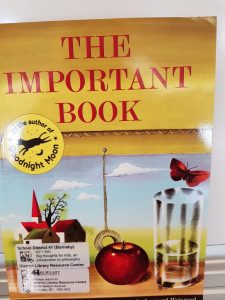 In connection with Social Studies, we analyzed picture books such as The Giving Tree, The Important Book, and Frederick, to look at big questions (or big problems to ponder) in ethics and philosophy. Which roles are valuable in a society? What makes you, you? Should you expect something in return if you give someone a gift? What is the meaning of work? See our e-portfolios for our thoughts on some of these questions!
In connection with Social Studies, we analyzed picture books such as The Giving Tree, The Important Book, and Frederick, to look at big questions (or big problems to ponder) in ethics and philosophy. Which roles are valuable in a society? What makes you, you? Should you expect something in return if you give someone a gift? What is the meaning of work? See our e-portfolios for our thoughts on some of these questions!
Applied Design, Art, and Maker Problem Solving!
Leading up to the holiday, we put our problem-solving skills to the test, finding ways to make creative decorations for our Winter Wonderland. Everyone learned how to do wool felt pictures; created zentangle, watercolour winter trees; and made geometric, hanging ornaments with embroidery thread.
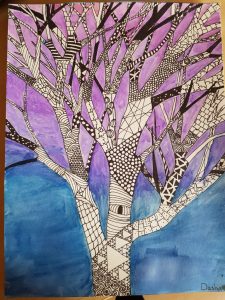
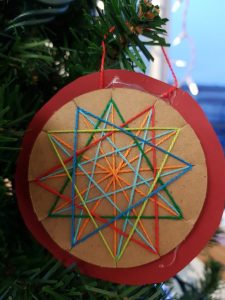
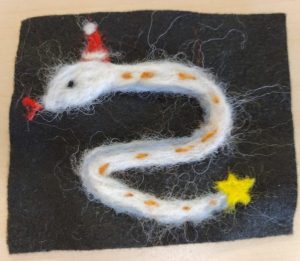
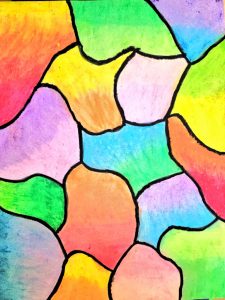 We discussed the colour wheel; primary, secondary, and tertiary colours; analogous and complementary colours; and how this information helps us in our presentations.
We discussed the colour wheel; primary, secondary, and tertiary colours; analogous and complementary colours; and how this information helps us in our presentations.
With this knowledge, we made amazing abstract colour designs, blending oil pastels together!
Art, Identity, and Spindle Whorls (Socials, Fine Arts, Math)
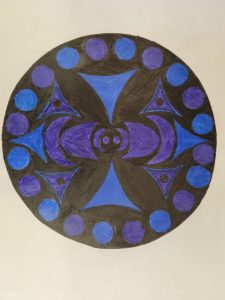 We looked at a variety of local indigenous art and discussed how the art of a culture is connected to place. We represent in our art what we see locally and what is important to us.
We looked at a variety of local indigenous art and discussed how the art of a culture is connected to place. We represent in our art what we see locally and what is important to us.
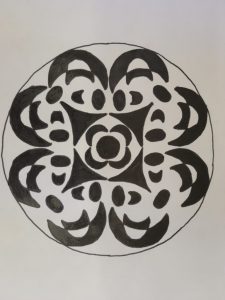 We looked closely at the story of the Spindle Whorl, discovering how this spinning tool was not only carved with special artwork and passed down in families, but also represented the family’s identity and indigenous group.
We looked closely at the story of the Spindle Whorl, discovering how this spinning tool was not only carved with special artwork and passed down in families, but also represented the family’s identity and indigenous group.
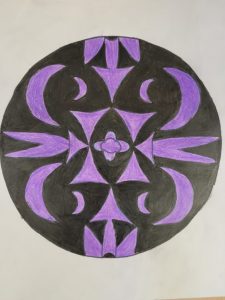 Then we looked at the shapes and colours of art from local Salish groups such as the Musqueam peoples, as compared to form line shapes of art done by indigenous groups further north such as the Haida. Inspired by the art of Susan Point, each student created their own circular print, using geometry to create reflexive symmetry through reflection, rotation, and translation of Salish shapes.
Then we looked at the shapes and colours of art from local Salish groups such as the Musqueam peoples, as compared to form line shapes of art done by indigenous groups further north such as the Haida. Inspired by the art of Susan Point, each student created their own circular print, using geometry to create reflexive symmetry through reflection, rotation, and translation of Salish shapes.
FINALLY, we made some action plans to solve problems ourselves – Language Arts, Socials, Science, Social Responsibility
There are many problems in the world, and even though some of them seem really big, we can all play a role in solving them! First, we looked at the United Nations’ Global Goals to end poverty, inequality, and environmental problems by 2030. The UN asks people all over the world to engage in these goals and to find ways to contribute to solving problems. You can INNOVATE, INVENT, or CAMPAIGN — three key ways to make change!
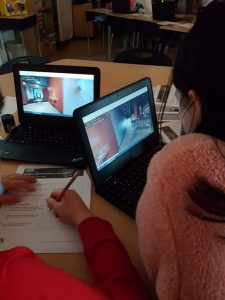 We were inspired by a long list of young people who have made change in the world, and we chose one to research further. After reading about their story, we came up with our own problems to solve and an action plan, which we presented to the class in PowerPoint format. Together, we can find creative ways to make a difference!
We were inspired by a long list of young people who have made change in the world, and we chose one to research further. After reading about their story, we came up with our own problems to solve and an action plan, which we presented to the class in PowerPoint format. Together, we can find creative ways to make a difference!
Stay tuned for our new units coming up in term three, as well as our Independent Project studies!


